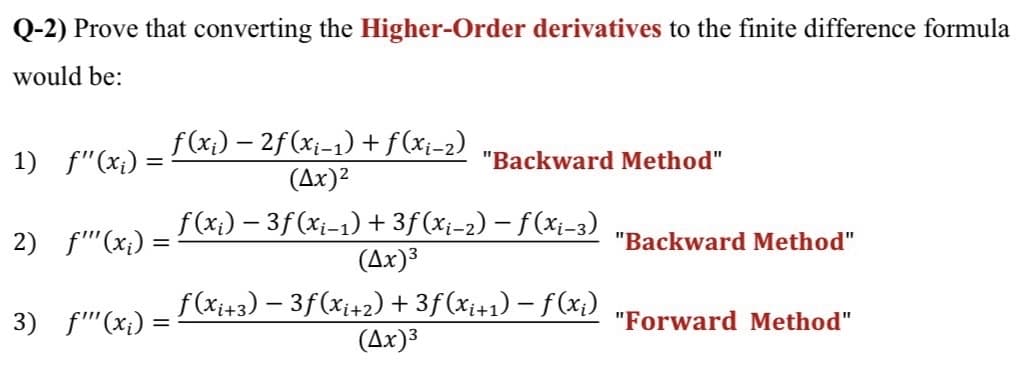Q-2) Prove that converting the Higher-Order derivatives to the finite difference formula would be: f(x;) – 2f (x¡-1) + f(xi-2) 1) f"(x;) = "Backward Method" (Ax)2
Q-2) Prove that converting the Higher-Order derivatives to the finite difference formula would be: f(x;) – 2f (x¡-1) + f(xi-2) 1) f"(x;) = "Backward Method" (Ax)2
Algebra & Trigonometry with Analytic Geometry
13th Edition
ISBN:9781133382119
Author:Swokowski
Publisher:Swokowski
Chapter9: Systems Of Equations And Inequalities
Section9.10: Partial Fractions
Problem 17E
Related questions
Question

Transcribed Image Text:Q-2) Prove that converting the Higher-Order derivatives to the finite difference formula
would be:
f (x;) – 2f (xi-1) +f(xi-2)
1) f"(x¡) =
"Backward Method"
(Ax)2
f (x;) – 3f (xi-1) + 3f (xi-2) – f(xi-3)
(Ax)³
2) f'(x;) =
"Backward Method"
f(xi+3) – 3f(x;+2) + 3f(x;+1) – f(x;)
(Ax)3
3) f"'(x;) =
"Forward Method"
Expert Solution
This question has been solved!
Explore an expertly crafted, step-by-step solution for a thorough understanding of key concepts.
Step by step
Solved in 4 steps

Recommended textbooks for you

Algebra & Trigonometry with Analytic Geometry
Algebra
ISBN:
9781133382119
Author:
Swokowski
Publisher:
Cengage

Algebra & Trigonometry with Analytic Geometry
Algebra
ISBN:
9781133382119
Author:
Swokowski
Publisher:
Cengage